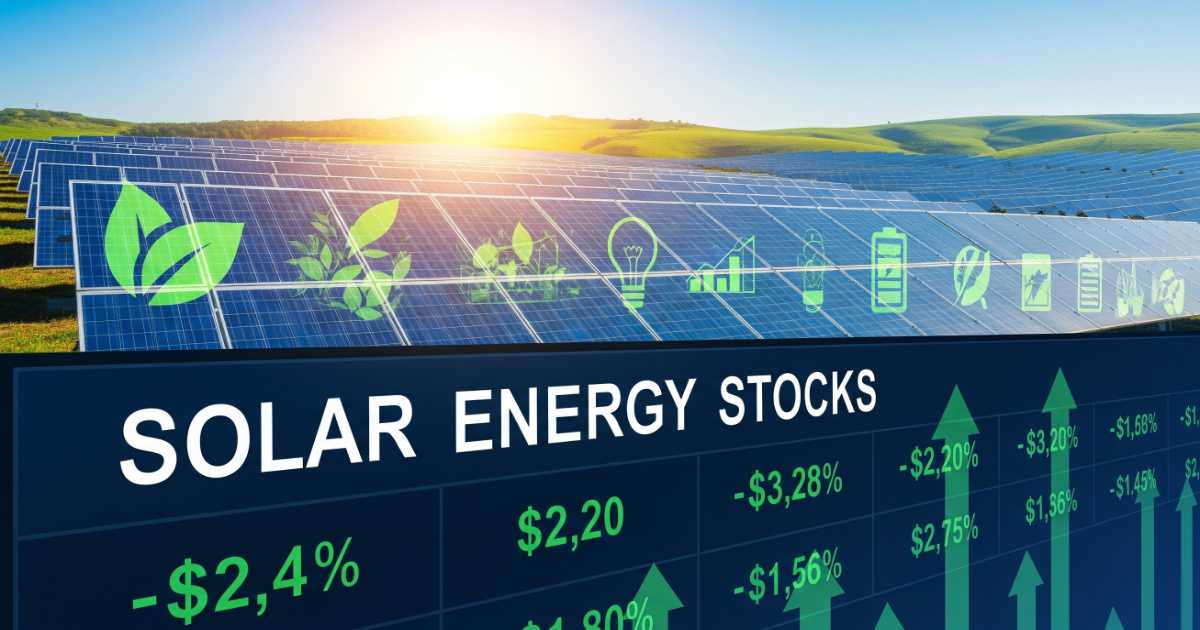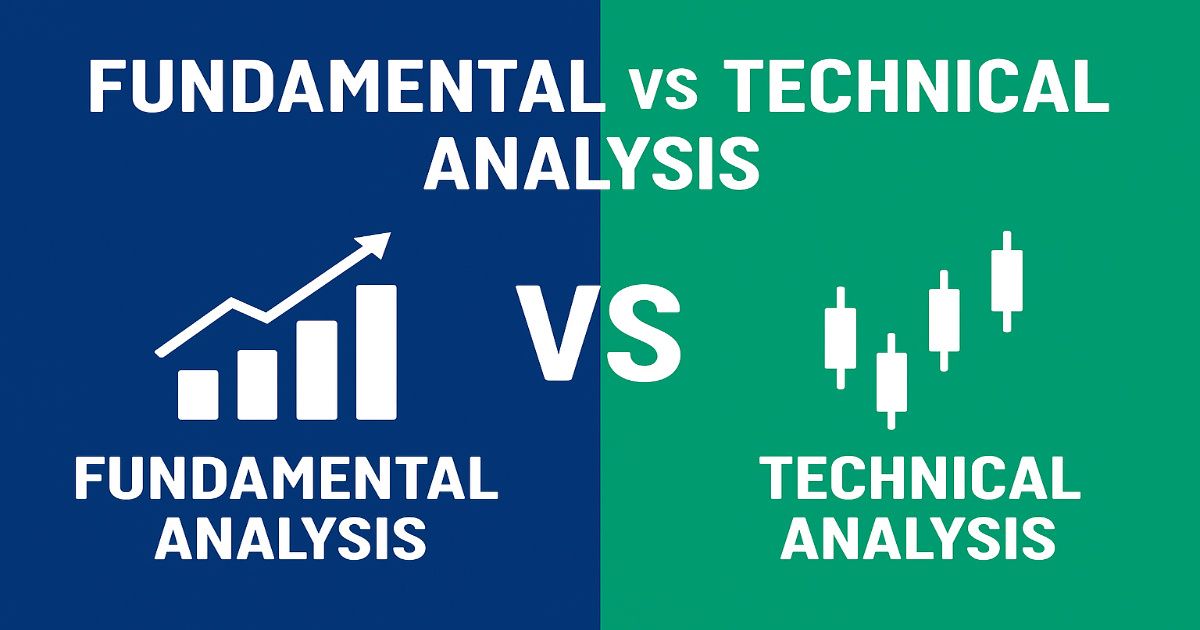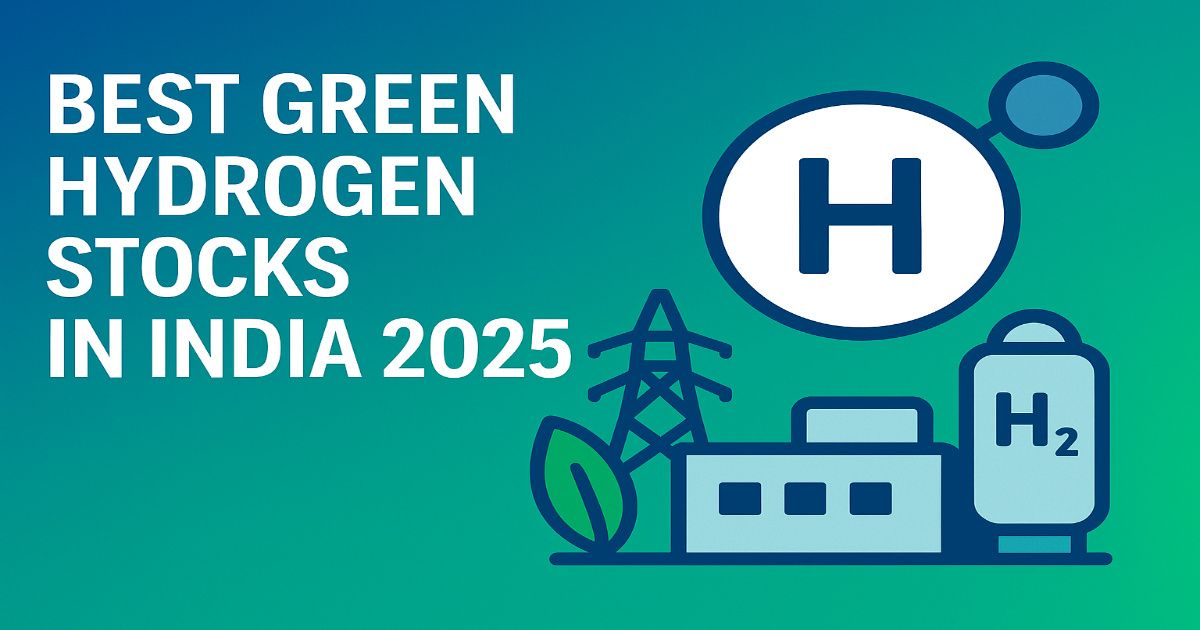Introduction
India’s solar industry is in its “S-curve” phase—installed capacity is scaling, costs keep falling, and the policy tailwinds (from domestic manufacturing to green financing) are strong. But “solar” on the stock market isn’t just one thing. You have:
- Utility-scale IPPs (independent power producers) that own and operate solar parks and sell power on long-term PPAs,
- EPC players who design and build plants,
- Manufacturers making modules or solar glass, and
- Financiers catalyzing the whole ecosystem.
This diversified value chain means your returns (and risks) vary widely depending on which “slice” of solar you buy. Below, I’ve curated 10 high-quality India-listed solar plays across the value chain, using a practical investor lens: scale and visibility, balance sheet quality, order book or pipeline, and structural advantage. I’ve also added crisp pros/cons, key growth triggers, and realistic risks so you can decide what suits your portfolio style.
How I Ranked These Solar Stocks (Methodology)
- Exposure to Solar: Material revenue/capacity from solar generation, solar EPC, or solar manufacturing/financing.
- Scale & Visibility: Installed/operational capacity today and multi-year pipeline or order book.
- Execution & Balance Sheet: Commissioning track record, funding access, promoter backing.
- Moat/Positioning: Manufacturing tech (TopCon, bifacial, glass), developer capabilities (hybrid, storage), or financing niche.
- Recency of Developments: Preference for companies with 2024–2025 milestones that improve earnings visibility.
The Top 10 Solar Energy Stocks in India (2025)
Listed in a sensible order for retail investors: large, diversified names first (stability), then focused plays with potentially higher growth (and higher volatility).
1) Adani Green Energy (AGEL)
Why it’s on the list: The country’s largest renewable IPP by far, with a massive operating base and an even bigger pipeline. Scale matters in renewables—cost of capital, execution muscle, and offtake relationships all improve with size.
- Scale & Momentum: As of June 30, 2025, AGEL crossed 15,539.9 MW operational capacity, including ~11,005.5 MW solar and additional wind/hybrid. This is the fastest and largest RE ramp-up in India to date. adanigreenenergy.com
- Vision: Targeting 50 GW by 2030, with continued additions across solar and hybrid parks (notably Khavda). adanigreenenergy.com
Pros: Unmatched scale, strong execution cadence, learning-curve cost advantages.
Risks: Concentration risk in certain geographies, capital intensity, and sensitivity to interest rates/policy.
2) Tata Power
Why it’s on the list: A diversified utility with deep solar presence—utility-scale, rooftop/residential, and EPC—plus strong brand and retail reach.
- Capacity & Targets: In Q1 FY26, Tata Power Renewables reported 5.6 GW utility-scale operational capacity (4.6 GW solar, 1 GW wind), targeting 7.3 GW by FY26-end. Tata Power
- Rooftop Leadership: Q1 FY26 rooftop run-rate took cumulative installations to ~2 lakh, surpassing 3.4 GW of installed rooftop capacity—an important retail moat. Tata Power Solar
- Fresh Investments: Exploring $5.6 bn clean energy build-out in Andhra Pradesh (solar/wind/hybrids).
Pros: Multi-segment solar exposure (utility + rooftop + EPC), strong brand, improving scale economics.
Risks: Utility returns are regulated; project timing and capital allocation discipline remain key.
3) NTPC (including NTPC Green/NREL)
Why it’s on the list: India’s largest power producer is now a serious renewables player.
- Strategic Push: Government approved large capital allocation for RE; target of 60 GW RE by 2032.
- Ongoing Solar Adds: Multiple recent commissioning milestones.
- State Partnerships: Multi-billion investments for solar, hybrid, and storage.
Pros: Strong balance sheet, large-scale opportunities, hybrid/floating solar potential.
Risks: Legacy thermal transition, bureaucratic pace.
4) JSW Energy
Why it’s on the list: Shifting quickly into a green utility with solar-wind-storage hybrids.
- Recent Move: Signed PPA for 300 MW hybrid capacity connected to ISTS.
Pros: Hybrid focus improves PLFs and stability; strong promoter group.
Risks: Scaling execution; capital cycle sensitivity.
5) NHPC
Why it’s on the list: Traditionally hydro, now expanding into solar with storage.
- Solar + Storage Auctions: Awarded 1,200 MW solar with 2,400 MWh storage.
- Own Projects: 300 MW solar under CPSU scheme in Rajasthan.
Pros: Strong PSU profile, dispatchable renewables, bankable counterparties.
Risks: Execution speed; hydro-heavy earnings mix.
6) SJVN
Why it’s on the list: Hydro-turned-green player with large-scale solar parks under execution.
- Commissioning: 78.23 MW of the 1 GW Bikaner project already operational.
Pros: Big project pipeline; PSU comfort.
Risks: Typical PSU pace; land and transmission bottlenecks.
7) IREDA
Why it’s on the list: Pure-play financier for green energy.
- Loan Book Growth: Nearly ₹80,000 crore loan book, solar ~25% of portfolio.
Pros: Diversified exposure across renewables; policy support.
Risks: Credit quality; sector concentration.
8) Waaree Energies
Why it’s on the list: India’s largest solar module manufacturer.
- Manufacturing Scale: 13.3 GW module capacity; advanced tech like TopCon and bifacial.
Pros: Scale, domestic content policy benefits, OEM partnerships.
Risks: Module pricing cycles; tech transition challenges.
9) Borosil Renewables
Why it’s on the list: Only large-scale solar glass manufacturer in India.
- Capacity Expansion: Adding ~600 TPD to support ~10 GW module capacity by 2026.
Pros: Import substitution, low domestic competition.
Risks: Energy cost volatility; execution timelines.
10) KPI Green Energy
Why it’s on the list: Focused Gujarat-based IPP scaling rapidly in Khavda.
- Projects: 645 MWp Khavda projects; major contracts with state utilities and Coal India.
Pros: Geographic focus, execution familiarity, large pipeline.
Risks: Mid-cap volatility; project concentration.
Why Invest in Solar Energy Stocks?
India’s solar sector isn’t just a climate story — it’s an economic and investment opportunity that’s scaling fast. Here’s why this theme is attracting both retail and institutional investors:
1. Massive Growth Potential
- India has committed to 500 GW of non-fossil capacity by 2030, with solar expected to contribute 280 GW+.
- Solar’s share in the energy mix is still under 15%, leaving huge headroom for expansion.
2. Falling Costs & Better Tech
- The cost per unit of solar power has dropped by over 80% in the past decade, making it cheaper than many fossil fuel sources.
- Next-gen technologies like TOPCon, bifacial panels, and storage integration are improving efficiency and returns.
3. Government Policy Tailwinds
- Schemes like PLI (Production-Linked Incentive), ALMM (Approved List of Models & Manufacturers), and CPSU tenders favor domestic manufacturers and developers.
- Waivers on inter-state transmission charges and state-level incentives boost project viability.
4. ESG & Global Capital Flows
- Global funds, pension funds, and green bonds are pouring into renewables because of ESG mandates.
- Solar companies with strong governance and sustainability practices can attract premium valuations.
5. Diverse Investment Options
- Investors can choose from utility-scale IPPs (steady cash flows), EPC companies (order book-driven), manufacturers (policy leverage), and component suppliers (upstream plays like solar glass).
- This allows you to balance growth and stability in your portfolio.
6. Long-Term Revenue Visibility
- Solar projects usually operate under long-term Power Purchase Agreements (PPAs) spanning 20–25 years, ensuring predictable cash flows for IPPs.
- For manufacturers and EPCs, the demand pipeline remains strong for years ahead.
Factors to Consider Before Investing in Solar Energy Stocks
While the solar energy sector offers high growth potential, it’s not without its challenges. Here are the key factors you should evaluate before adding solar stocks to your portfolio:
1. Business Model & Segment Exposure
- IPP (Independent Power Producers): Generate electricity and sell under long-term PPAs; steady returns but capital-intensive.
- EPC Companies: Depend on project orders; earnings can be lumpy and cyclical.
- Manufacturers & Component Makers: Benefit from domestic content policies but face tech and price competition.
- Your risk/return profile should match the segment you choose.
2. Order Book & Project Pipeline
- Check awarded projects vs. under-bid or MoU stage—only awarded projects with signed PPAs are bankable.
- For manufacturers, look at confirmed supply contracts and export orders.
3. Financial Health
- Assess debt-to-equity ratio and interest coverage—solar projects require large upfront capex.
- Consistent operating cash flows signal a sustainable business model.
- Watch for frequent equity dilution in growth phases.
4. Technology & Cost Competitiveness
- Solar tech evolves quickly (Mono-PERC → TOPCon → HJT).
- Companies that upgrade production lines and adopt efficient modules early will stay competitive.
- Manufacturers should maintain low cost per watt to survive pricing cycles.
Advantages of Investing in Solar Energy Stocks
Investing in solar energy stocks can be rewarding not only from a returns perspective but also in aligning your portfolio with long-term global trends. Here are the key advantages:
1. High Growth Potential
- India’s solar capacity is growing at a CAGR of over 20%, driven by policy support and falling technology costs.
- The sector is still in an early expansion phase, offering scope for multi-year compounding.
2. Long-Term Demand Visibility
- Power purchase agreements (PPAs) in solar projects often run 20–25 years, ensuring predictable revenues for Independent Power Producers (IPPs).
- Increasing rooftop solar adoption adds stability for EPC players and manufacturers.
3. Alignment with ESG Investing Trends
- Global funds are allocating more capital to environmentally sustainable businesses.
- Solar stocks with strong ESG credentials may enjoy better valuations and easier access to funding.
4. Falling Technology Costs
- New technologies such as bifacial modules and TOPCon improve efficiency, increasing project returns.
- Cost per watt for solar modules has dropped significantly in the past decade.
Disadvantages & Risks of Investing in Solar Energy Stocks
While solar energy stocks have strong growth prospects, investors should be aware of the potential challenges that may impact returns.
1. High Capital Requirements
- Solar projects, especially utility-scale plants, require large upfront investments.
- Companies may take on significant debt, which can strain cash flows during downturns.
2. Policy and Regulatory Uncertainty
- Although the government supports renewables, policy changes like tariff caps, ALMM rules, or subsidy cuts can affect profitability.
- Delays in approvals can push back project commissioning.
3. Technology Obsolescence
- Solar technology is evolving rapidly.
- A company’s existing production lines may become outdated if they fail to adopt newer, more efficient technologies like HJT or TOPCon.
Final Thoughts
The solar energy sector in India is not just a trend—it’s a long-term growth story driven by the government’s renewable energy targets, rising electricity demand, and the shift towards cleaner energy sources. With India aiming to achieve 500 GW of renewable capacity by 2030, solar stocks are positioned to benefit from strong policy support, technological advancements, and increasing adoption by industries and households alike.
However, investors should remember that while solar energy stocks can deliver impressive returns, they also come with challenges such as high valuations, execution risks, and policy dependency. The key is to focus on companies with strong balance sheets, proven execution capabilities, and a robust order book.
Whether you choose market leaders like Adani Green Energy for stability or fast-growing players like KPI Green Energy for higher growth potential, diversifying your portfolio and adopting a long-term investment view will help you ride the wave of India’s clean energy revolution.
The sun is only rising on this sector—invest wisely, stay informed, and you might just watch your investments shine brighter over time.
FAQs on Solar Energy Stocks in India
What are solar energy stocks?
Solar energy stocks are shares of companies involved in producing solar panels, developing solar power projects, or providing related services in the renewable energy sector.
Are solar energy stocks a good investment in India?
Yes, solar stocks can be a good long-term investment due to India’s renewable energy goals, supportive government policies, and rising demand for clean energy. However, they can be volatile and should be chosen carefully.
What is the future of solar energy in India?
The future looks promising, with India targeting 280 GW of solar capacity by 2030. Increased rooftop solar adoption, falling panel costs, and supportive policies will continue to drive growth.
Which solar company is Tata Group?
The solar company under the Tata Group is Tata Power Solar. Tata Power Solar is a leading solar panel manufacturer in India and is known for its innovative range of solar products and solutions.
Is it good to invest in solar?
Investing in solar energy can be beneficial for several reasons. One advantage is the sustainability of solar energy, as it is a renewable resource that does not deplete like traditional fossil fuels. Additionally, investing in solar energy can help protect against potential future increases in electricity costs, as the price of electricity from solar power can be locked in today. Furthermore, solar energy systems can increase property value and provide financial savings, in addition to the environmental benefits they offer.
Disclaimer:
The information provided in this article is for educational and informational purposes only. It should not be considered as investment or financial advice. Stock market investments are subject to market risks, and past performance is not indicative of future results. Please conduct your own research or consult with a certified financial advisor before making any investment decisions.







